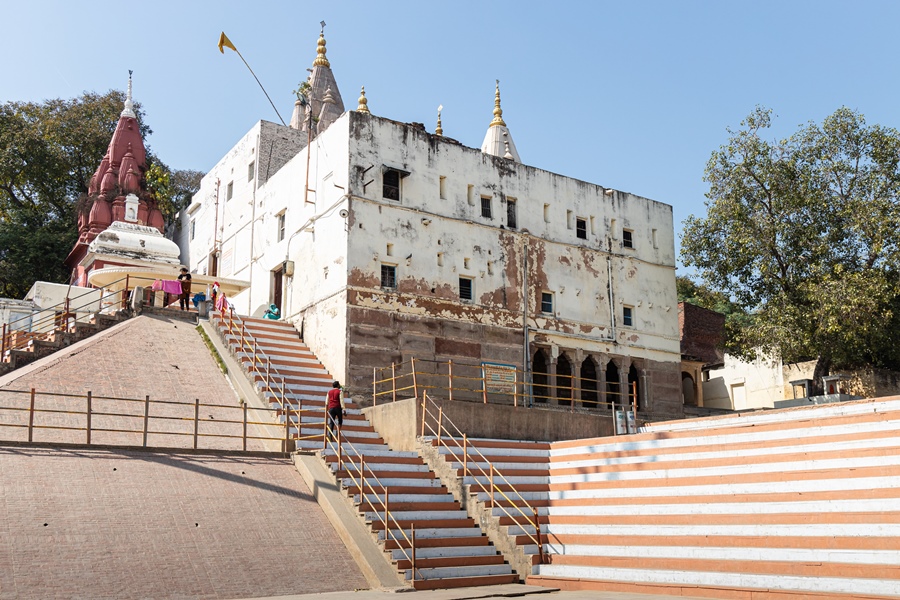Situated on a high plateau at the confluence of the Varana and Ganga rivers in the far north of Banaras (Varanasi), there is little doubt that Adi Keshav Temple is a very ancient site in much the same way as Lolark Kund in the south of the city.
Keshav is another name for Vishnu and Adi means ‘original’, and this is believed to be the first place where Vishnu came when he arrived in Kashi as Shiva’s emissary. This place is mentioned in the oldest Puranic listings of Kashi, when it was then known as Keshava.
The site is thought to have remained important until at least the 12th century as the Gahadvalas had their capital at Rajghat, some of the archaeological remains of which can still be seen nearby.
Some priests of Kashi describe the city as having five bodily parts, mapped to five specific ghats along the Ganga river; Adi Keshav are the feet (where Vishnu first placed his holy feet in Kashi), Panchaganga the thighs, Manikarnika the navel, Dashashwamedha the chest, and Assi the head.
Although the temple is popular with locals around Rajghat, it is rarely visited by pilgrims today. The antiquity and close associations with early Kashi appear to have been largely forgotten by modern day Banaras.
Looking at the exterior of the temple (below) one can see a number of unusual holes and pipes in the walls. Apparently after the mutiny of the British East India soldiers in 1857 the temple was occupied by the British who used it as a military outpost, the river here being an important crossing point for messengers and traders. These holes and pipes were inserted for rifles and have remained in place ever since. After the threat of the mutiny had passed, the temple was handed over to the state of Gwalior.
There is quite a lot to see here at this temple, but unfortunately on my visit most of the shrines were locked and there was nobody around to assist me. A shrine on the western side of the terrace houses a four-headed linga of Sangameshwara, the ‘Lord of the confluence’, honouring the joining of the Varana and Ganga rivers here. This I was sadly not able to see.
Visiting Adi Keshav Temple can be combined with the tomb of Lal Khan, the early archaeological remains of Kashi and the Jogi Bir Baba Temple, all of which are a short distance north-east of Malviya Bridge. It’s a great shame that such places are not promoted a little more to visitors of Banaras, they offer both variety and something a little different from the more popular riverside Ghats to the south.
Please ‘Like’ or add a comment if you enjoyed this blog post. If you’d like to be notified of any new content, just sign up by clicking the ‘Follow’ button. If you have enjoyed this or any other of my posts, please consider buying me a coffee. There’s a facility to do so on the righthand side of this website for desktop users, and just above the comment section for mobile users. Thank you !
If you’re interested in using any of my photography or articles please get in touch. I’m also available for any freelance work worldwide, my duffel bag is always packed ready to go…
KevinStandage1@gmail.com
kevinstandagephotography.wordpress.com
Categories: Adi Keshav Temple, India, Uttar Pradesh, Varanasi











Liked it very much it makes us to think that how our temples were and what they are now unattended and destroyed due to mismanagement
LikeLiked by 1 person
The entire Banaras holy city needs complete reforms with neatness while coming out of the surreptitious divine backward disbelief which will go a long way in prosperity and modernism which mine observed after a long span of 40 years. Regards and thanks
LikeLiked by 1 person